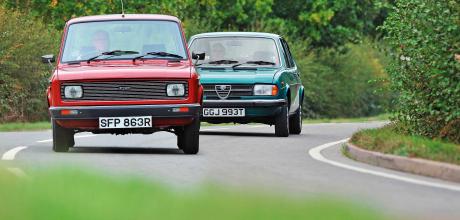1979 Alfa Romeo Alfasud Super 1.3 Type 902 vs. 1977 Fiat 128 1300 CL
Advanced engineering and design sophistication came as standard in Italy in the 1970s – even for family cars. But in this Fiat 128 versus Alfasud face-off, which one do we prefer five decades on?
Story by Simon Hucknall
Images by Michael Ward
Family A-Flair
ALFA V FIAT ’SUD FACES 128 1970s family saloons go head to head
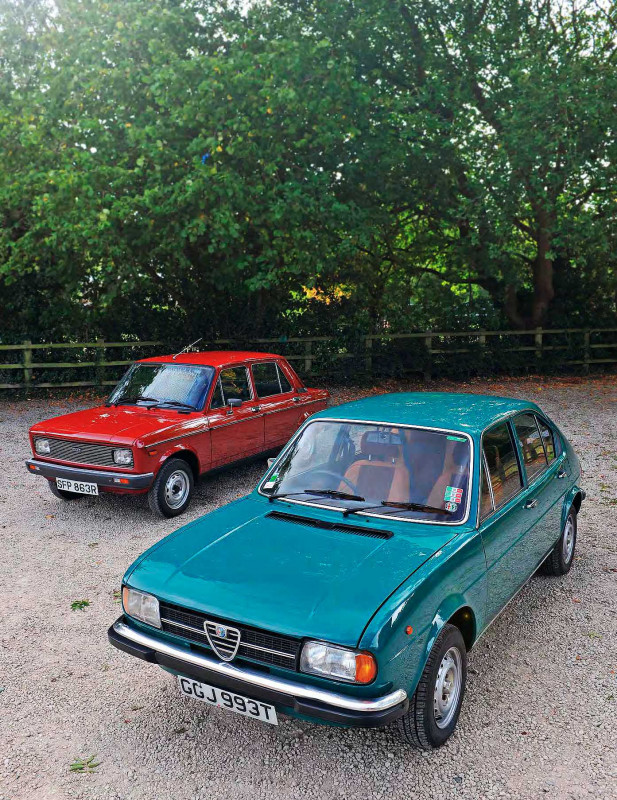
Fiat and Alfa Romeo: five decades ago, they were arch rivals vying to out-innovate one another. But today, they sit within the same omnipotent Stellantis empire, destined in future to share platforms, powertrains and architectures, along with other historic brands under the same umbrella. A case of how the mighty have fallen – or perhaps the prospect of revitalisation for two iconic names that may otherwise have floundered? In truth, it’s probably a bit of both.
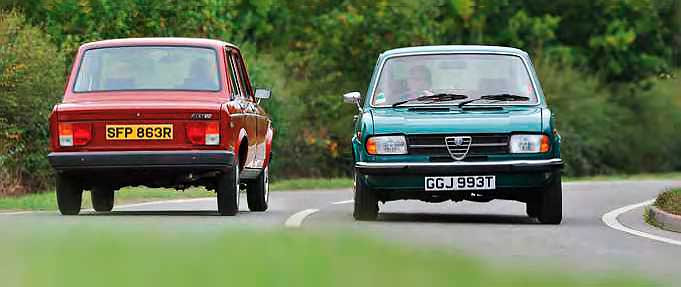
One thing is for sure, though, the legacy from each brand’s mainstream glory years is laid bare before you on these pages: the Fiat 128 and Alfasud. In a sea of 1970s predictability, championed by safe but dull models from Vauxhall, Ford et al, the 128 and ’Sud bristled with novel engineering solutions and intelligent design cues that left their rivals in the shade. They were revelatory offerings and would certainly have appealed to buyers brave enough not to accept the home-spun status quo.
And it was the more prosaic-looking 128 that got there first, and effectively became the template for not just every future front-wheel drive Fiat, but for pretty much every popular front-driver you can buy today. Launched in 1969, the 128 was the brainchild of Fiat’s legendary engineering director, Dante Giacosa, who during a 40-plus-year career at Turin had been responsible for a string of significant models, with the 128 being his swansong before retiring in 1970.
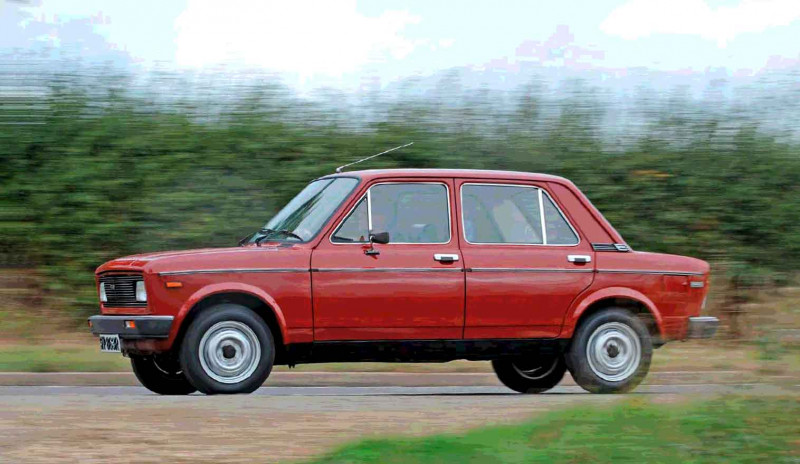
Like many other companies, Fiat had been wedded to rear-wheel drive platforms since the dawn of time, but Giacosa had recognised the packaging benefits of a transverse front-wheel drive layout many years before. However, his solution was no mere copy/paste of the system that Sir Alec Issigonis had popularised with the Mini. Instead, Giacosa positioned the gearbox at the end of the engine, rather than below it, as in the Mini. This did away with both components sharing a common oil sump to the benefit of outright power, durability, ease of maintenance and gearshift quality. It also enabled a front-mounted radiator (the Mini’s ran off the crank at the side of its engine) with a more efficient electric thermo-controlled fan.
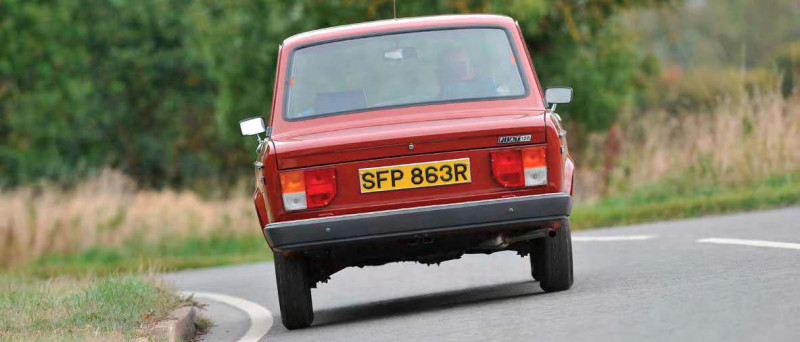
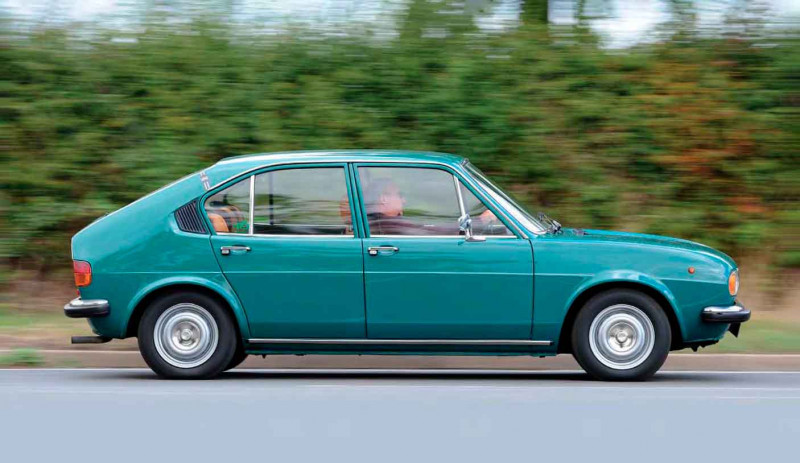
The engineering innovation didn’t stop there, either. In his mission to liberate 80% of space for occupants and their luggage within the 128’s diminutive 3.8 metre length and 1.6 metre width, Giacosa employed independent suspension all round, using MacPherson struts and lower wishbones, with large transverse springs across the rear doubling as an effective anti-roll bar.
But perhaps the 128’s crowning glory was its all-new, 1116cc overhead cam inline ‘four’, designed by none other than Aurelio Lampredi, the mastermind behind some of Ferrari’s greatest competition engines. High-revving and over-square, the compact unit provided the 128 with the kind of zesty performance that didn’t compute with its boxy lines.
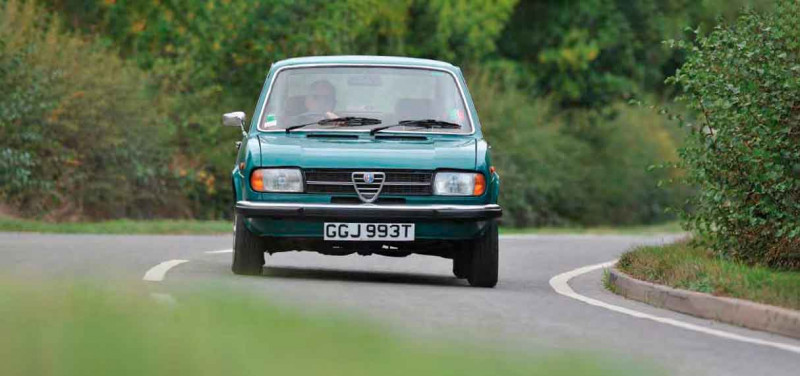
Boxy lines? Fiat’s chief designer Paolo Boano shaped the 128 and in an interview with Car magazine in March 1970 he defended its less than stylish form: “I was forbidden to exceed the existing exterior dimensions, and at the same time I had to seek the largest possible interior dimensions. It’s comparable in these respects to the Mini, in that the dimensions dictated the shape.”
Nevertheless, the 128 was an immediate hit and in 1970 was awarded European Car of the Year. Built at a bespoke plant in Rivalta near Turin, it arrived on UK shores in 1970, and spawned variants like the sporty Rallye, Coupé and Familiare estate in Series One guise, and 3P coupe after the saloon was facelifted in 1976 (as seen here). The 128 was gradually phased out in the UK after the launch of its successor, the Strada, in 1979.
Seeing the 1977 Pippin Red 128 1300 CL today parked next to Glenn Moffatt’s immaculate 1979 Alfasud Super 1.3 brings back some poignant memories. For full disclosure, the Fiat belongs to me and was bought new by my dad when I was just 12. But before he signed on the line for the car at Trinity Motors in Leicester, he road-tested a new ’Sud and rather liked it (as did I). But for reasons now lost in the annals of time, the Fiat – his second 128 – won the day. And do you know what? I don’t think I’ve been in a ’Sud since that test 45 years ago.
We’ll come back to how these 1970s jewels compare on the road shortly, but in the meantime, why did Alfa Romeo launch the ’Sud? The simple answer is that it needed to tap into the mainstream market to sustain its business, and while the idea of a small Alfa had percolated for many years, a gentleman’s agreement with Fiat had precluded the company advancing such a project. By the late 1960s, though, it could hold off no longer and work started on a small, well-packaged, affordable saloon, yet one that wouldn’t taint the lustre of the Alfa badge. Key to reducing manufacturing costs – and therefore that of the end product – the ’Sud was to be produced in a new plant on the site of a former wartime engine plant in Campania, near Naples, in the south of Italy (hence ‘Sud’), where the largely agrarian population equalled lower labour costs. But when it came to the Alfasud’s engineering and design, the need to cap costs merely drove greater innovation. Like the 128, it was imperative that the ’Sud be superbly packaged, but unlike the Fiat, its styling needed to retain the Milanese flair written into Alfa’s DNA.
Giorgetto Giugiaro’s Italdesign was tasked with drawing the ’S ud’s lines, and by doing so it became the design house’s first mass-market success. The four-door, two-box body created ample space for four adults inside, offering those in the rear more legroom than a short-wheelbase Jaguar XJ6, while keeping all occupants safe thanks to built-in crumple zones. The sizeable boot could accommodate a full set of suitcases but – again, like the Fiat – the ’Sud remained hatch-less until near the end of its production.
Of course, the ’Sud’s key differentiator was its remarkable horizontally-opposed four-cylinder engine, engineered specifically for the car by Rudolf Hruska. The 1186cc boxer unit’s inherent smoothness and flexibility would be unique in the class (although the Citroën GS’s air-cooled boxer would run it close). It also allowed for a low nose, contributing to an impressive Cd figure of 0.30, and relative refinement thanks to belt-driven camshafts. Front-driven, like the 128, the ’Sud also employed MacPherson struts up front, but with a beam axle at the rear, which – like the Fiat’s transverse leaf spring – doubled as an anti-roll bar.
Launched at the 1971 Turin Motor Show, with production starting the following year, the Alfasud remained on the market long after the 128. Initially available as a four-door only, by 1973 the ti model arrived, bringing with it a sportier-looking three-door body, five-speed gearbox and quad headlights. The rakish Alfasud Sprint coupe was added in 1976, and the following year came the 1286cc ti and Super. In 1984, the Alfasud was finally replaced by the Nissan-based Arna, although the Sprint soldiered on until 1989.
Interestingly, in contemporary road tests the 128 or Alfasud seemed not to be compared directly, despite the abundance of technical similarities and being in the same market sector. This was undoubtedly down to price: in 1979, a Fiat 128 1300 CL cost £2687, whereas the Alfasud Super 1.3 came in at £3100. Frankly, you see can see why. Passing the Fiat’s more utilitarian appearance and absence of brightwork, as soon as you drop into its cord cloth-trimmed seat, you’re faced with – well, not very much. The 1976 facelift ditched the earlier vinyl seats and introduced (rather scratchy) carpets in place of plastic floor covers. But only two dials – speed and temperature/fuel – fill the squared-off instrument binnacle, which is framed by four rocker switches covering the basic functions. All controls fall to hand nicely, and the facia’s lack of fussiness adds to the sense of spaciousness.
Drive just a few yards, and the 128 feels as eager to please as a baby Jack Russell. Throttle response is crisp, and as you work the 1290cc engine through the slick but longthrow four-speed gearshift, it always feels zestier than its meagre 60hp output suggests. The Lampredi ‘four’ loves to rev, but you’d never call it refined, sounding quite coarse in its upper reaches.
That chassis, though… This 128 is highly original and has only covered 6000 miles from new, so it still feels remarkably taut, with everything performing to spec. In the dry, grip is impressive, even on its period- correct 145-section Pirelli Cinturatos. But it’s the direct rack-and-pinion steering, engaging and full of feedback, that gives you so much confidence to press on. And when you do, the car’s light weight (822kg) and sophisticated chassis elicit the sort of body control that could show British sports cars of the day a clean pair of heels.
Glenn Moffatt’s 1979 Alfasud Super 1.3 (one model down from the ti, with a four-door body) is a rare survivor in this condition, but is still highly original after 54,000 miles, having had just a partial respray in its Pino Verde in recent years, plus some restorative metalwork around the inner front wings. Lower and more sporting than the Fiat, the ’Sud is aesthetically the more sophisticated here, a theme which continues when you enter the cabin. From the dished, leather-wrapped, three-spoke steering wheel to the attractively designed instrument nacelle, this would have been the mainstreamer offering solace to enthusiasts forced to downgrade from an Alfetta during 1978’s ‘winter of discontent’.
They may have baulked at the driving position, though, which is far more ‘Italianate’ than the Fiat’s. You stretch to grip the steering wheel; the offset pedals are set very close together; and the long brake pedal travel makes heel-and-toeing tricky. But start the boxer engine and accelerate down the road, and all ergonomic niggles fade away. The Alfa’s five-speed shift also has a long throw, and feels even notchier than the Fiat’s, but what counts is one of the smoothest, sweetest four-cylinder engines ever made. Its aural refinement belies what you see on the tachometer, and while you’d expect it to be faster than the Turinese car with slightly more power, its civility is what leaves you slightly agog.
That translates to the ’Sud’s dynamics, too. With lower-geared yet linear and tactile steering, the handling feels less kart-like than the 128’s. It also has a more relaxed gait, with superior rolling refinement and perhaps a tad more body movement through bends, commensurate with a slightly more pliant ride overall.
VERDICT
There is no clear winner here. The Fiat 128 and Alfasud – albeit at different price points in the same class – provided a level of engineering and design spice that was largely absent from their competitors. That they both moved the front-wheel drive game on substantially is testament to the brilliance and vision of their creators, whose cost constraints caused them to innovate, rather than compromise. But each company’s end game was well defined: for Fiat, the 128 was born out of a pragmatic view that front-wheel drive was the future, and that the packaging advantages it wrought should be fully embraced – and hang the styling (though not the driver appeal). In contrast, for the Alfasud to be regarded as a proper Alfa Romeo, it needed the material and design panache of its forebears. Let’s be thankful that both missions succeeded.
Beautiful Pino Verde Alfasud drives superbly, with sweet, smooth flatfour and pin-sharp handling
TECHNICAL SPECIFICATIONS Alfa Romeo Alfasud Super 1.3 (1979)
- ENGINE: 1286cc 4-cyl boxer
- BORE X STROKE: 80mm x 64mm
- COMPRESSION RATIO: 9.0:1
- MAX POWER: 68hp at 6000rpm
- MAX TORQUE: 100Nm (74lb ft) at 3500rpm
- TRANSMISSION: 5-speed manual, FWD
- SUSPENSION: MacPherson struts, coil springs (front) Beam axle, coil springs, trailing arms (rear)
- BRAKES: Discs all round
- TYRES: 165/70 x 13
- DIMENSIONS: 3978mm (L), 1590mm (W), 1369mm (H)
- LUGGAGE CAPACITY: 419 litres
- WEIGHT: 870kg
- MAX SPEED: 96mph
- 0-62MPH: 12.2sec
- PRICE WHEN NEW: £3100 (1979)
- VALUE NOW: £10,000
“My dad bought the Fiat new when I was just 12. He tested a ’Sud but, for reasons now lost in time, the 128 won the day”
TECHNICAL SPECIFICATIONS Fiat 128 1300 CL (1977)
- ENGINE: 1290cc 4-cyl inline
- BORE X STROKE: 86mm x 55mm
- COMPRESSION RATIO: 9.2:1
- MAX POWER: 60hp at 6000rpm
- MAX TORQUE: 97Nm (72lb ft) at 3000rpm
- TRANSMISSION: 4-speed manual, FWD
- SUSPENSION: MacPherson struts, coil springs, anti-roll bar (front), MacPherson struts, transverse leaf spring (rear)
- BRAKES: Discs (front), drums (rear)
- TYRES: 145/70 x 13
- DIMENSIONS: 3777mm (L), 1563mm (W), 1398mm (H)
- LUGGAGE CAPACITY: 368 litres
- WEIGHT: 822kg
- MAX SPEED: 90mph
- 0-62MPH: 14.6sec
- PRICE WHEN NEW: £2687 (1979)
- VALUE NOW: £8000
With just 6000 miles from new, this 128 feels supertaut, with an eagerness that belies its 60hp output


